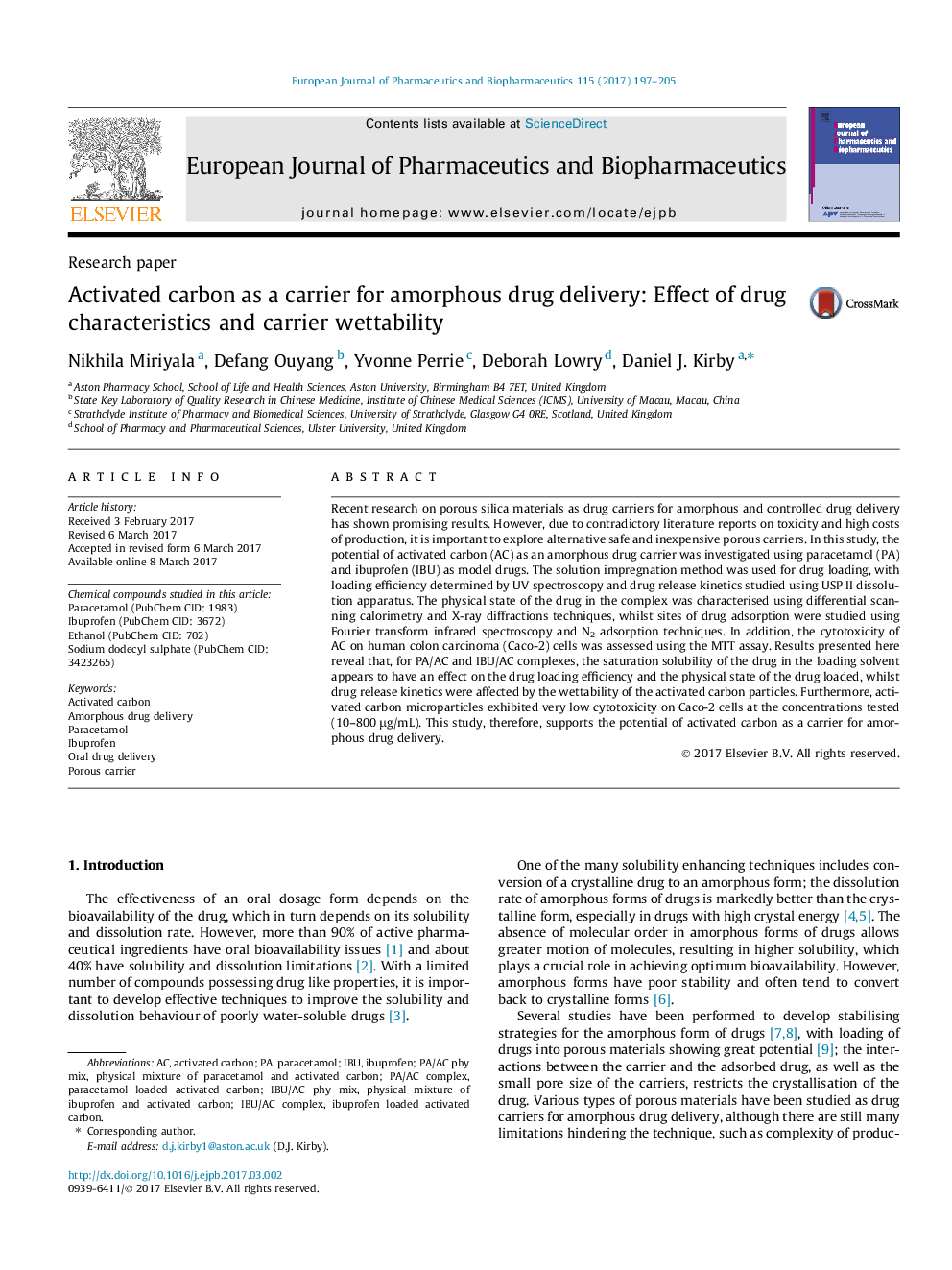| Article ID | Journal | Published Year | Pages | File Type |
|---|---|---|---|---|
| 5521580 | European Journal of Pharmaceutics and Biopharmaceutics | 2017 | 9 Pages |
Recent research on porous silica materials as drug carriers for amorphous and controlled drug delivery has shown promising results. However, due to contradictory literature reports on toxicity and high costs of production, it is important to explore alternative safe and inexpensive porous carriers. In this study, the potential of activated carbon (AC) as an amorphous drug carrier was investigated using paracetamol (PA) and ibuprofen (IBU) as model drugs. The solution impregnation method was used for drug loading, with loading efficiency determined by UV spectroscopy and drug release kinetics studied using USP II dissolution apparatus. The physical state of the drug in the complex was characterised using differential scanning calorimetry and X-ray diffractions techniques, whilst sites of drug adsorption were studied using Fourier transform infrared spectroscopy and N2 adsorption techniques. In addition, the cytotoxicity of AC on human colon carcinoma (Caco-2) cells was assessed using the MTT assay. Results presented here reveal that, for PA/AC and IBU/AC complexes, the saturation solubility of the drug in the loading solvent appears to have an effect on the drug loading efficiency and the physical state of the drug loaded, whilst drug release kinetics were affected by the wettability of the activated carbon particles. Furthermore, activated carbon microparticles exhibited very low cytotoxicity on Caco-2 cells at the concentrations tested (10-800 μg/mL). This study, therefore, supports the potential of activated carbon as a carrier for amorphous drug delivery.
Graphical abstractDownload high-res image (99KB)Download full-size image
